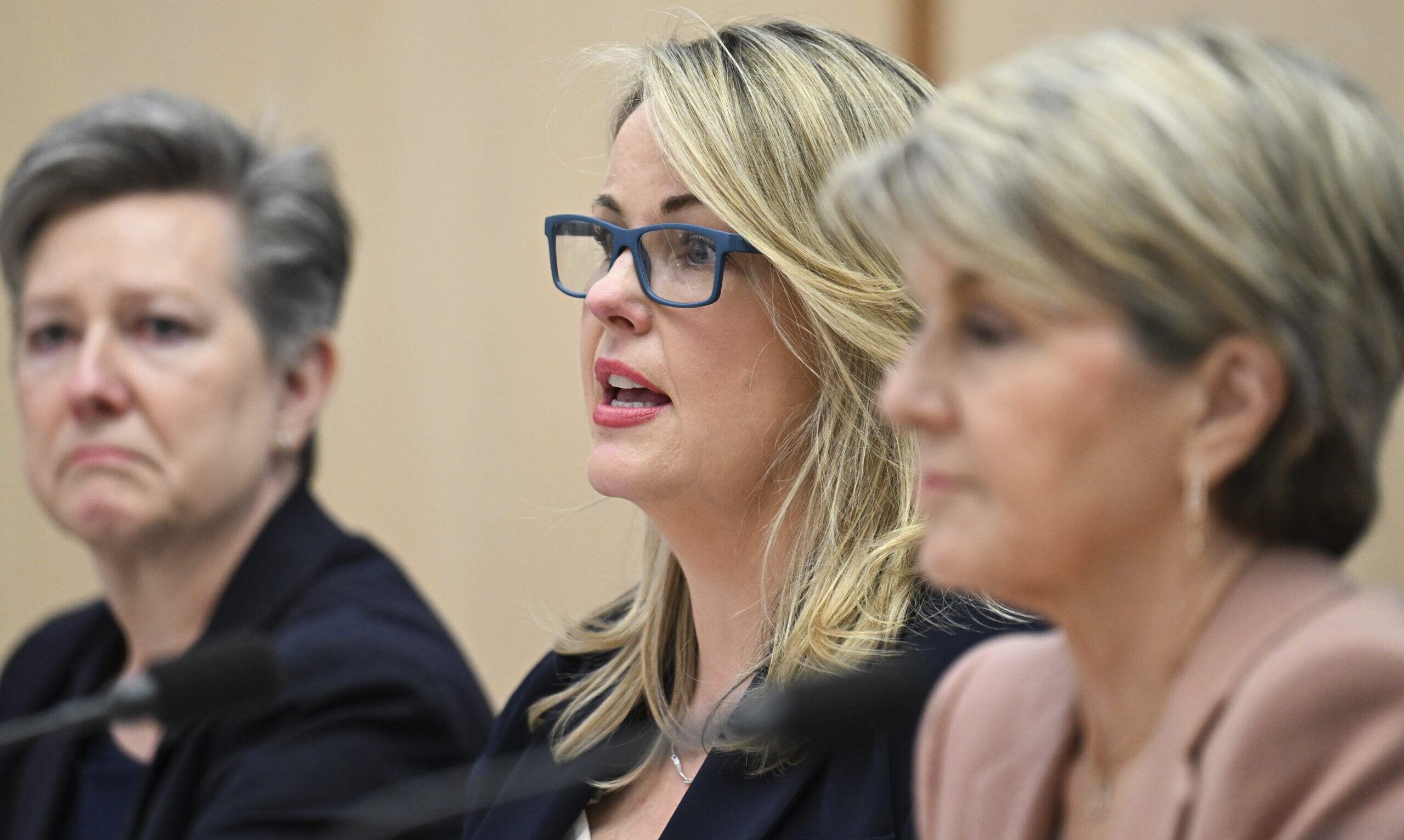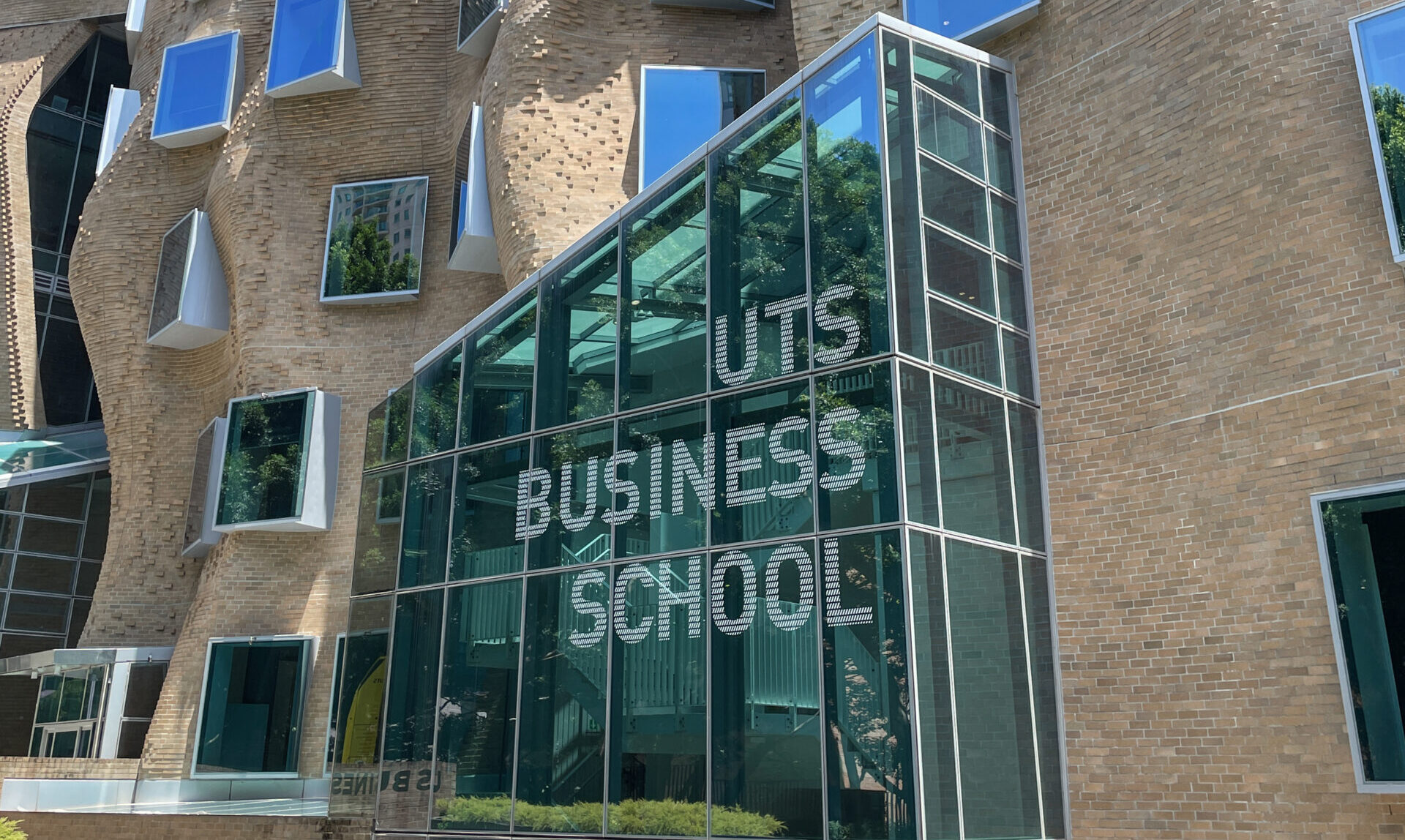Australian National University (ANU) staff feel “fundamentally disconnected” from the university’s leadership, a group of academics told a federal governance inquiry on Wednesday.
Please login below to view content or subscribe now.
Membership Login

Australian National University (ANU) staff feel “fundamentally disconnected” from the university’s leadership, a group of academics told a federal governance inquiry on Wednesday.
Please login below to view content or subscribe now.

The University of Technology Sydney (UTS) vice-chancellor has been asked whether he would consider an alternative restructure plan written by his own academics, at a NSW government hearing on Friday.
Please login below to view content or subscribe now.

For decades now, professors have been complaining about the futility of asking students to write term papers, otherwise known as a research paper. In theory, research papers teach students how to gather a large body of information, weigh conflicting interpretations and come up with their own ideas about the subject, all while honing their writing skills.
But the reality is very different. The prose is usually terrible and the ideas a bad rehash of class lectures. Grading these essays is pure torture. Anecdotally, I’ve heard many say that evaluating papers is the worst part of teaching. If Dante had known about grading, he would have added a new circle of hell where the damned have to grade one bad paper after another for all eternity.
And now we have AI, or “artificial intelligence,” in the form of ChatGPT, Grok, Gemini and a host of other platforms. Submit a prompt, and these programs spit out an essay that, aside from the occasional hallucination, is actually pretty good. Grammatical mistakes are rare; there’s a thesis, evidence and organization.
Even worse, using AI for schoolwork is rampant in both K–12 and higher ed. As James D. Walsh puts it in his now-infamous New York magazine article, “Everyone Is Cheating Their Way Through College.” And it’s nearly impossible to catch cheaters, especially now that the airless, robotic prose that’s often a marker of an AI-written essay can be masked by programs that promise to “unlock truly human-like AI text.”
What to do? If you have a large class, interviewing students about their essays to ensure they didn’t use AI is impractical, and randomly choosing students to interview could lead to charges of bias. Besides, suspecting everyone of plagiarism destroys the class atmosphere.
Many have gone back to handwritten exams and in-class writing assignments. But grading a pile of blue books is as agonizingly tedious as a pile of papers.
My solution has been to replace the final research paper with a creative project.
Instead of a detailed prompt or instructions, I give my students very wide latitude to do, as the phrase goes, whatever floats their boat. Nonetheless, I still set a few parameters. They have to tell me several weeks in advance what they have in mind. They can’t take a piece of paper, draw a line across it and say, “Behold: my interpretation of Hamlet.”
I have only two hard rules: The project must reflect a good-faith effort to interpret something we’ve read in class, and they have to hand in a brief description of what they tried to accomplish. For those willing (most are), the students present their projects to the class during the period allotted for the final exam. Other than that, they do what they want—and I’ve gotten amazing results.
When I was teaching the literature of terrorism, one student happened to be going to New York for spring break, so she went to the Sept. 11 memorial and interviewed people. Another student composed a rock opera based on Thomas Kyd’s Elizabethan play The Spanish Tragedy. A group put together a postapocalyptic performance of King Lear on the heath, using the university’s loading docks for their stage. I’ve gotten raps, short stories, children’s books, parodies performed and written, musical compositions, and paintings.
For example, a student produced this project for my last Shakespeare class (reproduced with the student’s permission):
Created by Teresa Cousillas Lema
This pencil drawing represents the student’s response to Al Pacino’s delivery of Shylock’s “Hath not a Jew” speech in Michael Radford’s 2004 film, The Merchant of Venice. The three images represent the different emotions Shylock displayed over the course of his speech: rage, sadness, determination.
For the background, this student wrote out Shylock’s speech, thereby committing it (she told me) to memory. But this project represents more than a pretty picture: It demonstrates a profound response to Shakespeare’s words and Pacino’s delivery of them.
This project accomplished nearly the same goals a term paper is supposed to accomplish: reflecting on the material and responding to the play both emotionally and intellectually. As a final payoff, while most students forget about their term papers seconds after they submit them, I’m guessing this student will remember this one and carry forward a deep appreciation of Shakespeare.
Granted, switching to creative projects does not entirely eliminate the possibility of using AI to cheat. Students could still resort to AI if they want to produce anything that involves writing (e.g., a screenplay or a short story), or, for visual projects, they could use an AI art generator. But the opportunity to create something they’re invested in, as opposed to responding to the professor’s essay topics, reduces the incentive to not do the work. The project is something the student wants to do rather than something they have to do.
Yet there is something lost. When the creative project replaces the research paper, students will not have the experience of sorting through multiple and contradictory interpretations. They won’t learn about literary theory and different approaches to literature. And they won’t learn how to write critical prose.
In short, in my discipline, replacing the research paper with a creative project means moving away from teaching English majors how to be literary critics, and that’s not small. It means reorienting the undergraduate English major away from preparing our best students for graduate school and more toward historically informed response.
Nonetheless, it makes no sense to continue with an evaluation method that just about everybody agrees has long since lost its value. So I suggest abandoning the essay for another method that not only accomplishes nearly the same aims but, in the end, brings joy to both student and teacher.

The new commission is currently seeking expedited approval from the U.S. Department of Education to serve as an official accreditor responsible for maintaining quality standards at colleges and universities. This development represents a direct challenge to the Southern Association of Colleges and Schools Commission on Colleges, the traditional accrediting body that currently evaluates institutions across Louisiana and ten other Southern states including Alabama, Florida, Georgia, Kentucky, Mississippi, North Carolina, South Carolina, Tennessee, Texas and Virginia.
The formation of this alternative accrediting body stems from growing tensions between conservative politicians and established accreditors. These conflicts have centered on traditional accreditors’ standards related to diversity, equity and inclusion initiatives, as well as their requirements for safeguards designed to limit external political influence in public higher education governance.
Landry’s executive order establishes a Task Force on Public Higher Education Reform charged with developing recommendations for implementing the new commission. The task force will specifically focus on creating a pilot program for dual accreditation, allowing Louisiana schools to maintain authorization from both the new commission and the Southern Association simultaneously.
The governor highlighted the ideological motivations behind the move in his announcement.
“This task force will ensure Louisiana’s public universities move away from DEI-driven mandates and toward a system rooted in merit-based achievement,” Landry said.
Florida Governor Ron DeSantis, who helped launch the original commission, articulated similar sentiments when announcing the new accreditor in June.
“[The Commission for Public Higher Education] will upend the monopoly of the woke accreditation cartels, and it will provide institutions with an alternative that focuses on student achievement, rather than the ideological fads that have so permeated those accrediting bodies over the years,” DeSantis declared.
The practical implementation of this new accrediting system faces a significant hurdle, as U.S. Department of Education approval is mandatory before any institution accredited solely by the new commission can receive federal financial aid. This requirement could potentially affect students’ access to federal funding programs if the transition is not handled carefully.
The composition of Louisiana’s new task force reflects the governor’s significant influence over the state’s higher education leadership structure. With the exception of Commissioner of Higher Education Kim Hunter Reed, every task force member has been directly appointed by Landry or his conservative legislative allies. The task force includes Board of Regents Chairwoman Misti Cordell, University of Louisiana System Board Chairman Mark Romero, LSU System Board Chairman Scott Ballard, Southern University System Board Chairman Tony Clayton, Louisiana Community and Technical College Systems Chairman Tim Hardy, Senate Education Committee Chairman Sen. Rick Edmonds, and House Education Committee Chairwoman Rep. Laurie Schlegel.
Additionally, Landry has appointed his executive counsel Angelique Freel and Commissioner of Administration Taylor Barras to the task force, with the option for them to send designees in their place. The governor retains the authority to select three additional task force members, further consolidating his influence over the group’s composition and direction.
This level of gubernatorial control over higher education governance represents a recent shift in Louisiana’s political landscape. Last year, Landry successfully advocated for legislative changes that granted him direct appointment power over the chairs of the state’s five higher education boards, positions that were previously elected from within the boards’ memberships. An earlier version of this legislation would have extended Landry’s authority to include direct hiring of university system presidents, but this provision was ultimately removed due to concerns that such concentration of political power could jeopardize existing accreditation status.
The task force operates under a compressed timeline that reflects the urgency Landry places on this initiative. The group must convene its inaugural meeting no later than August 31 and maintain a regular schedule with meetings occurring at least once every two months. The task force faces a deadline of January 30, 2026, to submit its comprehensive recommendations for implementing the new accrediting system in Louisiana.

On the first Sunday in July, Ipswich runs a free music festival at Christchurch Park.
It’s a great experience for Ipswich – it’s one of few times in a year where the town is full and busy.
Anyone from an Ipswich secondary school will likely have fond memories – meeting their friends on Hippie Hill – seeing multiple people you know all at once, getting into mosh pits, going on the Booster. The list goes on.
But despite my advocacy for Ipswich, I once found myself anxious to attend. Earlier in my apprenticeship, I had difficult experiences at work with a frequent performer at this festival.
This is something which, nearly six years after the ordeal ended, I am still coming to terms with.
Something which has helped me a great deal is the idea of exposure therapy. This is the act of revisiting certain ideas and places from a new reference point.
The intent is that it neutralises any bad associations with an idea or place by creating new associations. Over time, more neutral or even good experiences will outnumber the bad ones.
It’s like treating grief as a ball in a jar, where the jar grows around the ball over time. The pain is still there when the ball hits the jar, though the ball is much less likely to hit the expanding insides of the jar.
Along these lines, I approached the 2024 Ipswich Music Day with a fresh perspective. Seeing the band in the programme made me reflect on the rhetoric around being an apprentice and how it’s positioned alongside other options.
I would argue that apprenticeships are not an alternative to university, at least not in all cases. Whilst it is a clear-cut alternative in some cases, such as advanced apprenticeships, it is more complex for Higher and Degree apprenticeships.
In these cases, it is debatable – on the one hand, these apprentices can attain qualifications at the equivalent level of a degree without attending a university.
In others, such as in my own personal experience, going to university was a core part of my experience – my qualification was a degree accredited by a university.
Gaining an academic education is what drew me to my degree apprenticeship, along with the opportunity to meet other students and experience (and create) a stimulating academic environment with them.
The difference in my case was that I wanted to apply what I had learned much more immediately and meaningfully – doing this would allow the knowledge to be retained more easily for me.
Maybe my experience is not universal – I can’t claim to know what other students’ experience has been like.
Nevertheless, I did my best to gain a fulfilling student experience, which was easier to achieve when I lived locally.
Whilst I did attend the university Film Society and meet up with friends, I did not have the “full” experience – I wasn’t living away from home, and I didn’t have as much free time to study and discover my interests. This is because much of the free time was consumed by a full-time job.
On paper, it does appear to be mostly work with some study release thrown in. This only accounts for the official contact hours, respectively from the employer and the university. To do well as a degree apprentice, you need to be willing to invest time in serious, self-paced academic study outside of the allotted contact hours. From my experience, this was as much as the time I spent at work.
If people who have chosen these options with the express intention of not going to university realise that they have to go to one, then they’re going to dislike the experience or drop out altogether.
Therefore, a contradiction presents itself:
Why is an option promoted as an “alternative to university” when half of it involves going to university?
The common resolution to this contradiction for policymakers and marketers is to just diminish or hide the role of the university as much as possible.
Then, the purpose of the apprenticeship is perceived as solely a means of gaining employment, rather than for its educational merit – university, within this paradigm, is viewed as a distraction or an obstacle to be traversed in order to accomplish solely career-focussed success
But the problem with the approach is disengagement, both socially and academically.
For me, making the most of the educational aspects of the apprenticeship is as important as making the most of the position of employment.
The goal of an apprenticeship is to start from nothing and to gain experience in a given domain – my own experience shows that the creation of a virtuous cycle of learning is essential in gaining this experience:
The root of the contradiction is a separation between the experience of studying for a degree and the other aspects of university education. These other aspects are often overlooked, of which I have some first-hand experience.
When I have made genuine efforts to engage with every aspect of the experience, I am told that I should have gone to university full-time or that I am spending too much time focussed on academics at the expense of my professional work.
Seeing the band in the Ipswich Music Day programme made me reflect on an approach to resolve the contradiction of promoting degree apprenticeships to people who don’t want to go to university. This solution arguably comes from a change in definitions.
The band defines itself on their website as being “alt-rock”. Alternative rock is a broad genre of rock defined by the fact it is influenced from a diversity of independent music genres.
It is defined as an alternative to forms of rock that were becoming mainstream, such as arena rock – it is a different approach to the common genre of rock. Alt rock is not an alternative to rock as a whole – jazz and classical music are not considered “Alt Rock” for this reason.
We can see that alt-rock doesn’t describe a genre separate from rock. Its approach is different, with alt-rock defining a range of heterophonic subgenres.
Likewise, it can be argued that we should consider arguing for “alt-uni”. This terminology would reflect the fact that degree apprenticeships are alternative to the mainstream of full-time university education, but are not an alternative to university as a whole.
Arguably, degree apprentices bring a range of learning approaches and knowledge to universities, such as through their professional training.
When I have previously suggested this idea, some argued that “alt-degree” would be a better term, as it focuses on the approach to the degree rather than the university.
But I believe the approach to a degree should be the same for all students, and this expectation contributes to the challenges of completing a degree apprenticeship.
The definition of what this alternative approach would constitute may vary amongst apprentices. Some debate is definitely due, though I would say that the following are important to the definition of alt-uni:
Degree apprenticeships are not an alternative to university when a university education is involved.
Instead, just as alt-rock is not an alternative to rock, they should be conceived as an alternative approach to university (“alt-uni”).
This approach necessarily requires intentionality, balancing a university life with professional work. Done right, it will create a more inclusive, experience-rich education that values both theory and practice.

In the latest development on Julie Su’s contentious nomination for secretary of the Department of Labor (DOL), Sen. Joe Manchin (D-WV) appears unlikely to vote in favor of Su when her nomination reaches a floor vote in the Senate. Recent news reported that Manchin may be seeking alternative candidates for the position, though no names have been publicly revealed at this time. Given the current 51-49 Democratic majority in the Senate, however, Manchin’s potential opposition means Democrats cannot afford to lose any additional support for the nomination.
The odds may be further stacked against Su as Sens. Krysten Sinema (I-AZ) and Jon Tester (D-MT) have yet to reveal whether they will support Su’s nomination. Although Manchin, Sinema and Tester all caucus with Democrats, they face reelection in 2024 in Republican-leaning states, leaving them in a precarious position as Republicans are seemingly united in opposing Su.
On April 19, the Senate Health, Education, Labor, and Pensions (HELP) Committee held a hearing on Su’s nomination to serve as secretary of labor. During the hearing, Republicans and Democrats discussed Su’s performance as the secretary of California’s Labor and Workforce Development Agency (LWDA), including her involvement in the agency’s handling of COVID-19-related unemployment insurance payments. Republicans on the committee pointed to the widespread COVID-19 unemployment insurance (UI) fraud paid out by the state. On the other side of the aisle, Democrats defended Su’s record. With regard to the UI fraud, Democrats held that California’s statistics were low in comparison to other states.
The hearing also focused on several key labor and employment issues that Su will work on as secretary of labor. On the topic of independent contractor classification, Republicans again focused on Su’s work at the LWDA, calling attention to her role in California’s Assembly Bill 5 law. The law establishes an ABC test, which is a three-pronged test used to classify workers as either employees or independent contractors. Republicans expressed concerns over whether Su would try to implement an ABC test through DOL regulations. In response, Democrats clarified that the ABC test is not included in the DOL’s new proposed rulemaking and that the DOL has previously stated that it lacks the legal authority to implement this test for classifying independent contractors.
Another issue area raised by Republicans was that of joint employment. Although her support for the joint employment standard was questioned, Ranking Member Bill Cassidy (R-LA) testified that Su has committed to not pursue changes to the joint employer standard if she is confirmed. Su said she understands the importance of the franchising model, stating that there is no plan currently on DOL’s fall or upcoming spring regulatory agenda to change the standard. Notably, she did not say whether there would be a rulemaking on the joint employer issue after the upcoming spring regulatory agenda.
A week after the hearing, the Senate HELP Committee voted to move Julie Su’s nomination to serve as secretary of labor out of committee and to a full Senate floor vote. The committee vote was divided along party lines, with 11 Democrats voting in favor and 10 Republicans voting against her nomination, foreshadowing the trouble she may face to be confirmed by the full Senate.
Given Manchin’s likely opposition and the narrowly divided Senate, Su’s confirmation as secretary of labor by the full Senate is still uncertain. If Sinema or Tester also commits to opposing Su, Su will likely not have the votes to be confirmed. As a result, Senate Majority Leader Chuck Schumer (D-NY) has yet to announce when the vote on Su’s nomination will hit the Senate floor.
In the meantime, Su will continue to serve as the acting secretary of labor in the absence of a person confirmed into that position. As a reminder, there are no limitations on the functions of an acting secretary, leaving Su with full authority over the DOL while her nomination is pending. That being said, anticipated rulemakings from DOL, such as the FLSA overtime rule and the independent contractor classification rule, may be held back from publication as a result of Su’s drawn-out nomination process.
CUPA-HR will keep members apprised of any major personnel or regulatory updates from DOL.
The post Julie Su’s Confirmation for DOL Secretary Uncertain as Senator Manchin Seeks Alternative Nominees appeared first on CUPA-HR.